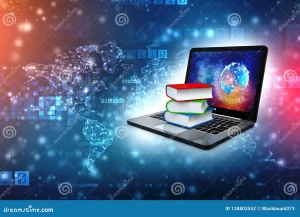
Technology has transformed the learning process and will continue to evolve. Even in conventional classrooms, students need to develop digital skills, as many assignments are now submitted online. Adapting to technology is no longer optional—it’s an essential part of modern education.
Digital literacy is also constantly evolving, and both teachers and students are striving to keep up with its rapid advancement. Even educators must stay updated to adapt to these changes. However, I have recently encountered situations where students do not see digital literacy as essential for keeping up with the class. In other words, they do not yet recognize it as an integral part of learning or understand that being digitally literate is crucial for effective and responsible language learning. This might create some challenges for both teachers and learners. In this blog post, I will discuss why it is important to prioritize digital literacy in our classes and how we can help our students who are struggling with making progress in technology.
I think we need to prioritize digital literacy in our classrooms mainly because those who resist developing digital skills can slow down class progress, creating an imbalance between those who embrace technology and those who struggle with it. Fortunately, through peer collaboration and understanding, students can overcome this and meet the digital learning expectations. While peer support is valuable, it should be considered as a learning opportunity rather than a temporary rescue. The mindset which supports the idea that I don’t have to accomplish new milestones in learning because there’s always someone coming to the rescue isn’t something we would like to promote in learning environments. Every student must take responsibility for improving their tech skills rather than relying on others to fill the gap.
To help our students overcome this challenge, we should acknowledge that the fear of technology is real. Many students find it intimidating due to its rapid evolution and unfamiliarity. As teachers, we may not be psychologists, but we have always played a role in addressing students’ psychological barriers—whether it’s boosting their confidence, fostering social identity, or bridging cultural gaps. Helping students overcome their apprehension about technology is no different; it is simply another challenge we must guide them through in this AI-driven era.
In short, accepting the integral role of technology in education and, therefore, investing in digital literacy is a vital part of being accountable as a language learner. While mutual support, understanding, and patience are necessary, students must understand that saying, “Teacher, I’m sorry, but I’m not good at technology,” may no longer be an acceptable excuse.

Digital literacy is such a crucial part of education, but it’s tough when some students just don’t see its importance. I agree with the idea of using peer collaboration to bridge the gap, as it allows students to help each other and learn at their own pace.